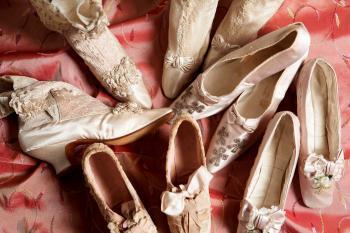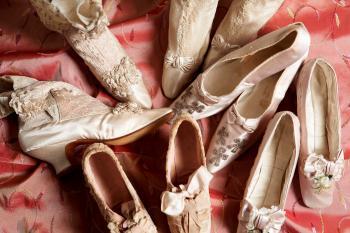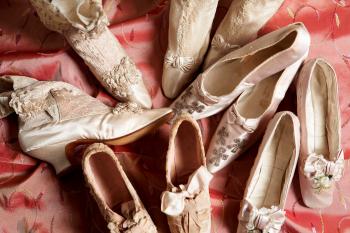AMSTERDAM, the Netherlands—Last month the Amsterdam Hermitage was officially re-opened by Dutch Queen Beatrix and Russian President Dmitry Medvedev.
The Hermitage is a branch of the world-famous Hermitage Museum in St. Petersburg, Russia, and is now home to the exposition “At the Russian Court: Palace and Protocol in the 19th Century.”
The grand exhibition offers visitors an impression of the 19th century Russian Court and a varied display of more than 1,800 treasures, including court dresses, paintings, jewelry, chessboards, and royal shoes.
The treasures, all from the State Hermitage Museum in St. Petersburg, display the elaborate social hierarchy and richly layered traditions of the Tsarist court.
The exhibit is divided into two sections. A left wing is devoted to the 19th century court—a period that spanned the reigns of tsars from the little-known Paul I, son of Catherine the Great, to the tragic Nicholas II, the last tsar of Russia. The other wing focuses on the parties and themed balls hosted by the tsars.
The Royal Throne Room
Entering the left wing, we arrive in the throne room and are welcomed by the elegance of the Tsars’ rich artistic heritage. With a courteous and stern radiance, royals such as Alexander III, Nicolas II, and Tsarina Maria Fjodorovna glare at us from the paintings.
The short explanations that accompany each painting highlight a detail or two about the former royals. We learn, for example, that Tsarina Aleksandra Fjodorovna loved reading, dancing, and music and that she had a sharp, ironic view of men. About Alexander I, we learn that he introduced the empire style to Russia and that he was an ally of Napoleon Bonaparte.
The midsection of the throne room displays a rich diversity of royal costumes and dresses. The dresses are refined, detailed, rich in color and elaborate, among them the golden brocade, silver-threaded masquerade dress of Tsarina Maria Iljinitsjna. Visitors can gaze at a costume of Dmitry Borisovich Golitsyn made of velvet kaftan and edged with fur.
One visitor commented about the ceremonial dresses that it “would be quite an undertaking to wear such traditional costume.” An older lady responded by saying that the women in those days did not walk but instead “strode forward.”
At the end of the room stands a royal throne with a double-headed eagle—a symbol of the Romanovs—made in 1797. Originally other furniture was considered inappropriate for this room, and so there are only a few stone vases.
Dancing With the Royals
Upon entering the spacious ballroom and with the aid of classical music, we get a feel of what these grand festivities were like. In rooms like these, grand balls were held to celebrate the opening of the social season. On such occasions, it was a custom that the Tsar danced with the wife of the highest diplomat present, while the Tsarina danced with the diplomat.
The clothing worn at the balls generally were Russian dresses, but there were also themed balls in the style of Catherine the Great, Chinese costumes, and even robes of ancient Greece. In the large collection of costumes displayed in this part of the Hermitage, one indeed finds clothing with a foreign look.
The balls were not only a privilege of the highest social class. On certain occasions, other social classes were also invited, giving them a rare glimpse of the royal family’s winter palace.
Adjacent to the main rooms are smaller ones, each with a theme such as hunting, music, jewelry, games, theater, female shoes, and the like. In these small chambers, we find that majesty is not only in the grandness of large buildings and staterooms, but also in small objects d‘art such as antique fans, handbags, and binoculars.
The Hermitage in Saint Petersburg
All of the items on display at the Hermitage are loaned from the Hermitage in Saint Petersburg. The Hermitage as an art institution dates back to 1764, when it was founded by Tsarina Catharine the Great.
But Tsar Peter the Great laid the basis for the collection when he left Russia in secret in 1697. While on a diplomatic mission to Western Europe, the tsar gave instructions to purchase paintings and commissioned artists to come and work in Russia.
The Hermitage now shows around 65,000 of the more than three million art objects in the museum’s 350 rooms.
The exhibition will continue in Amsterdam through Jan. 31, 2010.











